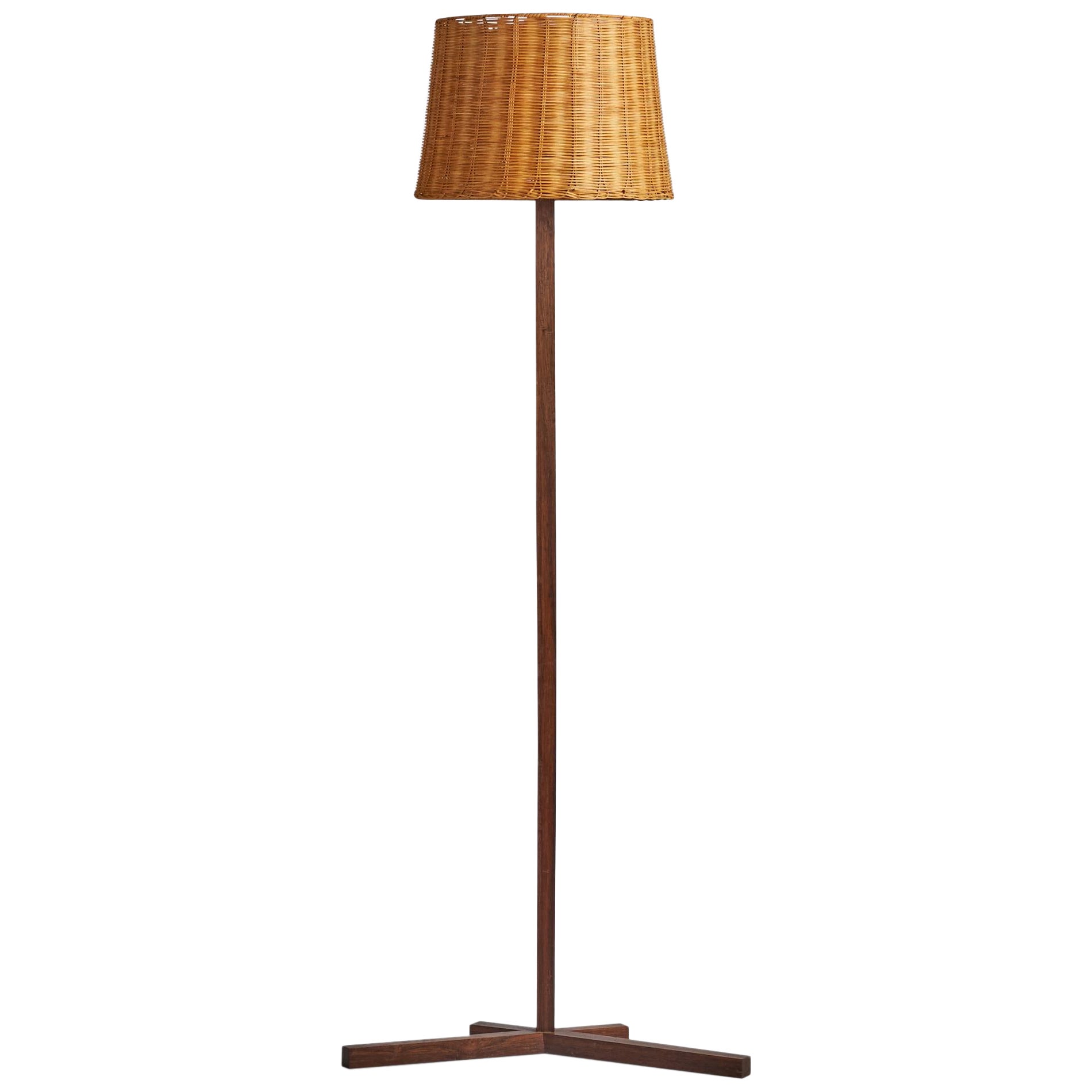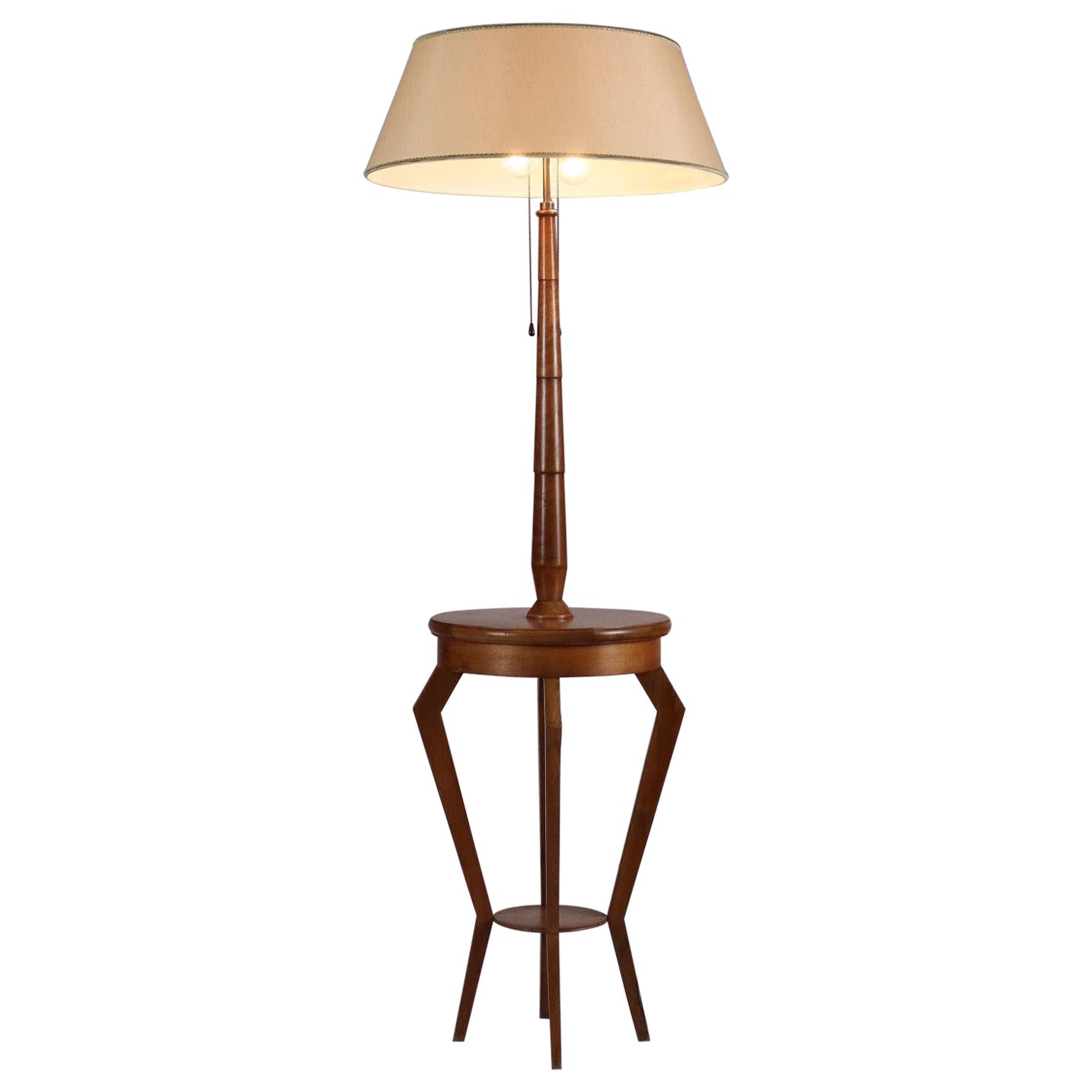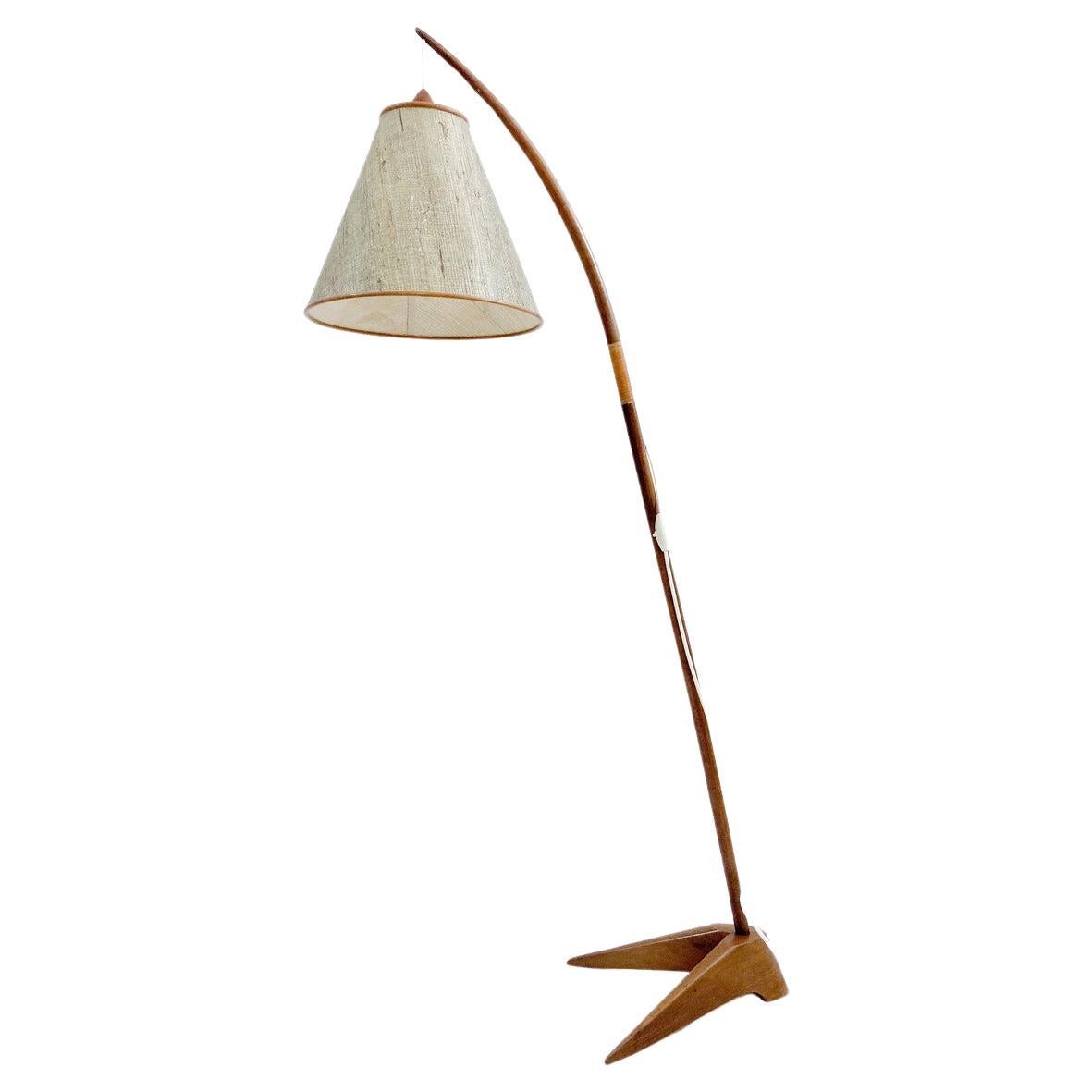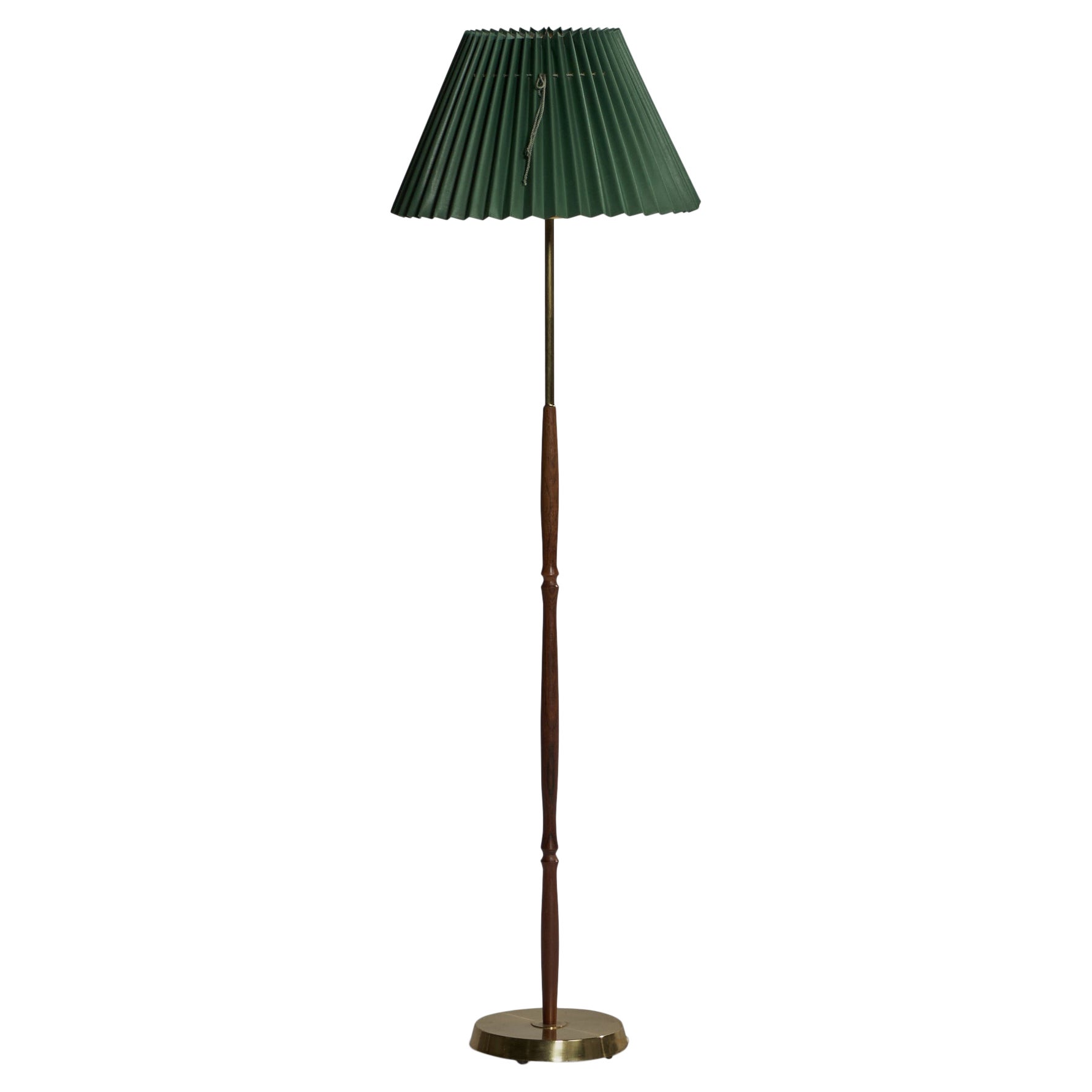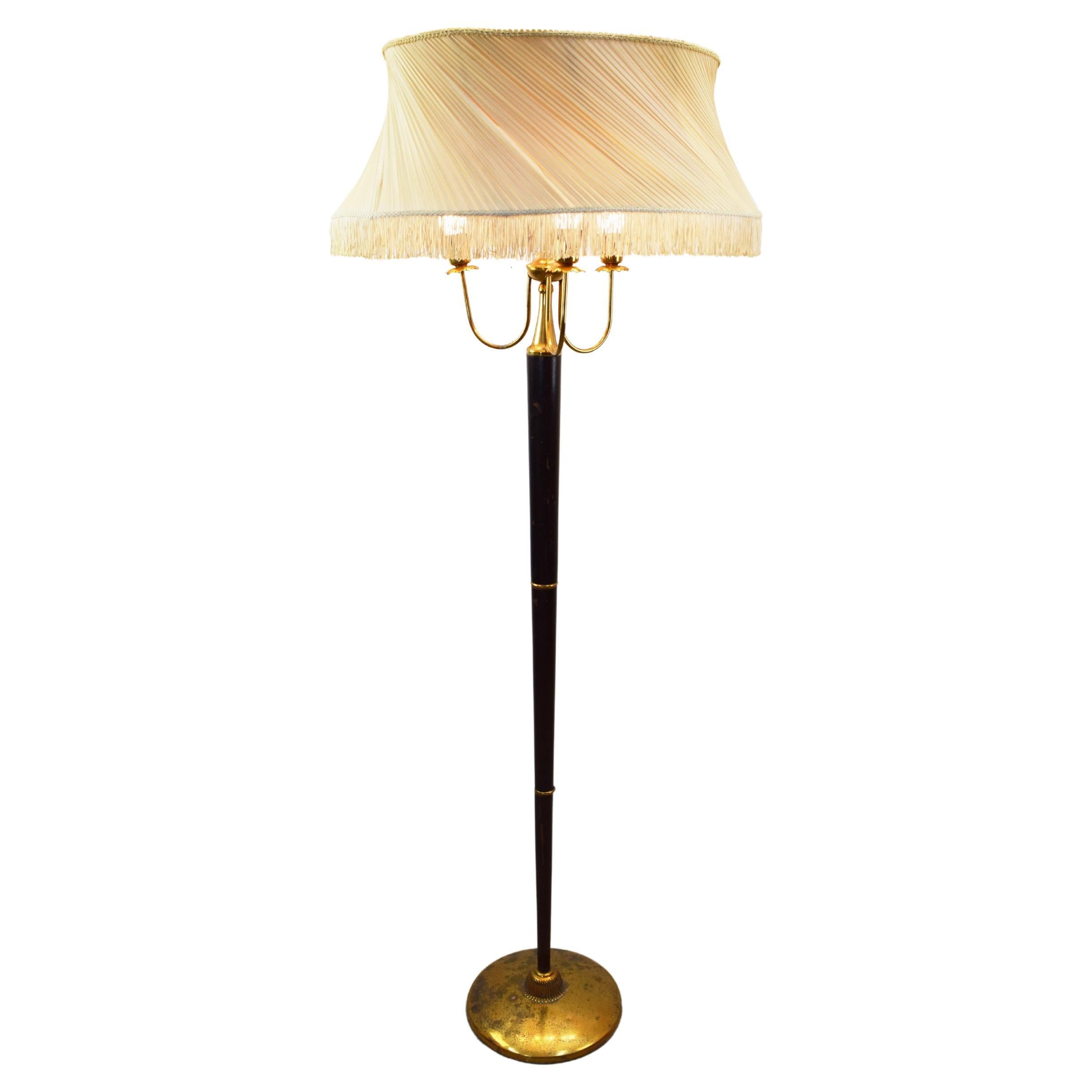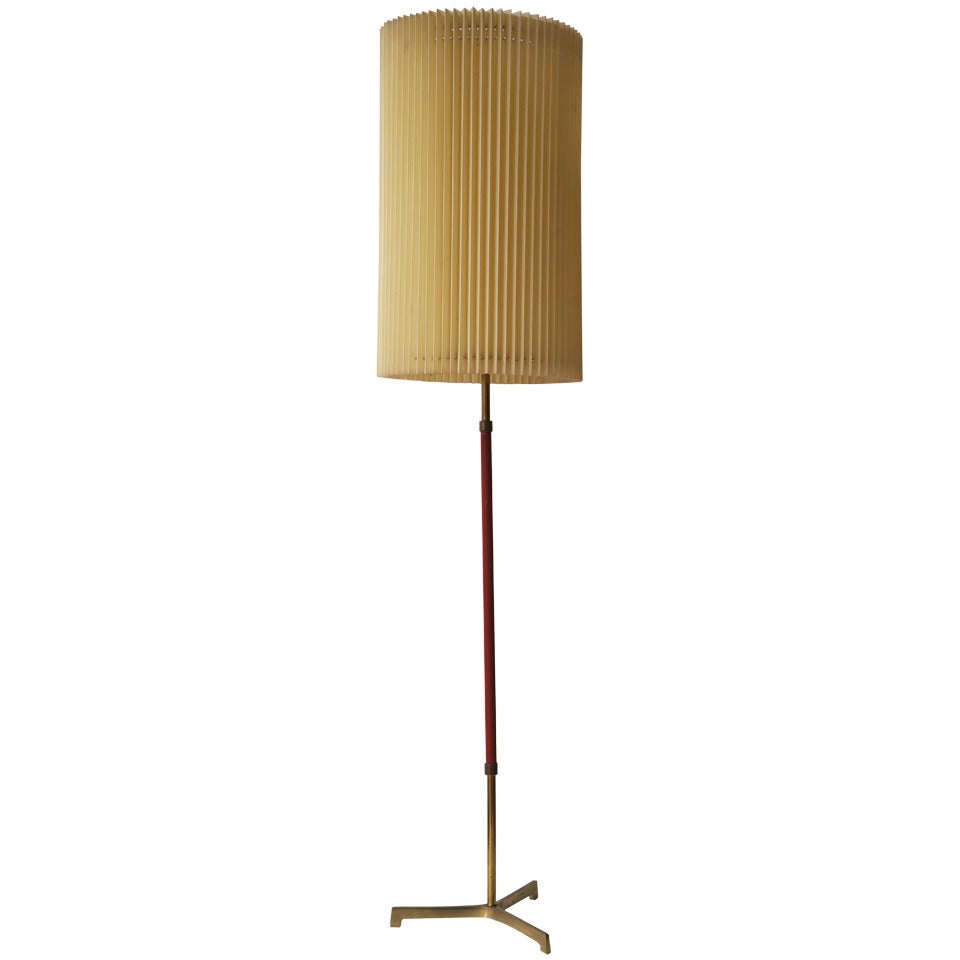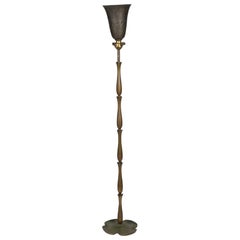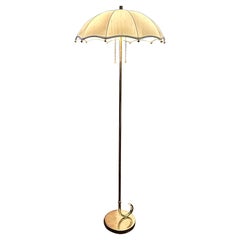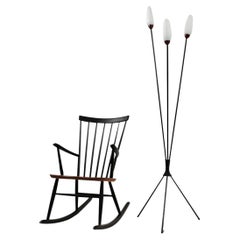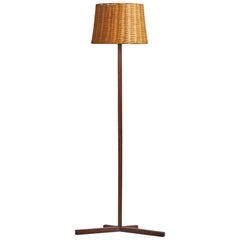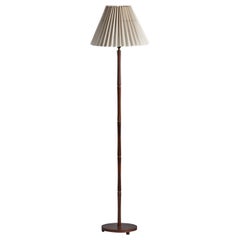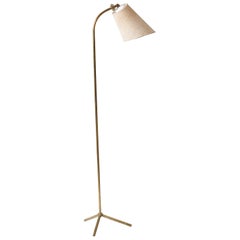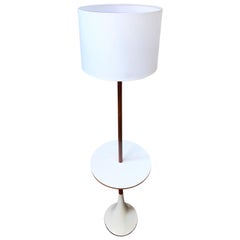
Estelle & Erwine Laverne Originals Modern Rosewood Lamp Table Floor White 1950s
View Similar Items
Want more images or videos?
Request additional images or videos from the seller
1 of 5
Estelle & Erwine Laverne Originals Modern Rosewood Lamp Table Floor White 1950s
About the Item
- Creator:Erwine & Estelle Laverne (Designer)
- Dimensions:Height: 44 in (111.76 cm)Width: 12 in (30.48 cm)Depth: 12 in (30.48 cm)
- Power Source:Plug-in
- Lampshade:Not Included
- Style:Mid-Century Modern (Of the Period)
- Materials and Techniques:
- Place of Origin:
- Period:
- Date of Manufacture:1950
- Condition:Wear consistent with age and use. Minor losses. Minor fading. Fair vintage condition. Some patina & signs of age to base. Needs to be rewired.
- Seller Location:Brooklyn, NY
- Reference Number:1stDibs: LU4190313756322
About the Seller
5.0
Platinum Seller
These expertly vetted sellers are 1stDibs' most experienced sellers and are rated highest by our customers.
Established in 2017
1stDibs seller since 2018
606 sales on 1stDibs
Typical response time: 1 hour
Authenticity Guarantee
In the unlikely event there’s an issue with an item’s authenticity, contact us within 1 year for a full refund. DetailsMoney-Back Guarantee
If your item is not as described, is damaged in transit, or does not arrive, contact us within 7 days for a full refund. Details24-Hour Cancellation
You have a 24-hour grace period in which to reconsider your purchase, with no questions asked.Vetted Professional Sellers
Our world-class sellers must adhere to strict standards for service and quality, maintaining the integrity of our listings.Price-Match Guarantee
If you find that a seller listed the same item for a lower price elsewhere, we’ll match it.Trusted Global Delivery
Our best-in-class carrier network provides specialized shipping options worldwide, including custom delivery.More From This Seller
View AllEstelle & Erwine Laverne Originals Modern Rosewood Lamp Table Floor White 1950s
By Erwine & Estelle Laverne
Located in Brooklyn, NY
Estelle and Erwine Laverne for Laverne originals - Tulip base rosewood lamp table floor lamp. Maker’s mark on underside. Extremely rare example of a piece by E & E Laverne that includes wood of any sort (rosewood) alongside the non-traditional materials for which they are most known. I cannot underscore how exceptionally rare this piece is within the Estelle and Erwine’s oeuvre. It most probably dates from the between the years 1960-1961, as the weighted tulip base is reminiscent of their Champagne chair and the central table evocative of their cafe table that was a part of the Lily collection of the late 1950’s.
Dimensions: H 43.5 inches, W 11.75 inches, D 11.75 inches.
‘The Invisibles” by Elaine M. Salkaln (from the April 18, 2004 New York Times)
On the surface, this is a simple design story of a husband-and-wife team, Estelle and Erwine Laverne, who produced exceptionally beautiful, innovative midcentury-modern wallpapers, fabrics and furniture -- designs that are rare today, yet coveted by a few specialized dealers and aficionados.
But the story goes deeper -- to a convergence of culture, class, art and love. Sadly, though, the love gets caught up in the grittier details, transforming what would have been a grand romance into a modern American tragedy.
Were this a docudrama, it would begin with a scene from the filming of the sci-fi fantasy ''Men in Black II'': in the center of a glass-walled, ultramodern, living room swarming with cameramen, lighting and booms, a little dog jumps up and down on the seat of a tall, sensuously sculptured clear acrylic chair...
Category
Mid-20th Century American Mid-Century Modern Floor Lamps
Materials
Fiberglass, Rosewood
$5,460 Sale Price
35% Off
Mid-Century Aldo Tura Lily Pad Bronze Scalloped Floor Lamp, Original Shade
By Aldo Tura
Located in Brooklyn, NY
An exceedingly rare, possibly one-of-a-kind Aldo Tura bronze lily pad floor lamp, base signed.
Dimensions: 72.5" x 12".
Born in 1909, Italian designer-...
Category
Mid-20th Century Italian Mid-Century Modern Floor Lamps
Materials
Brass, Bronze
Murano Opaline Caged Art Glass Monumental Table Floor Lamp Regency
By The Marbro Lamp Company, Barovier&Toso
Located in Brooklyn, NY
Midcentury Barovier and Toso Murano opaline caged art glass monumental table or floor lamp. Monumental!
Category
Mid-20th Century Italian Mid-Century Modern Table Lamps
Materials
Brass
$1,104 Sale Price
38% Off
Gilbert Rohde for Mutual Sunset Lamp Company Brass Umbrella Floor Lamp, 1930s
By Mutual Sunset Lamp Co., Gilbert Rohde
Located in Brooklyn, NY
Gilbert Rohde for Mutual Sunset lamp Company, unlacquered brass umbrella floor lamp with silk shade, all original, 1930s. Timeless rarity. P...
Category
Early 20th Century American Mid-Century Modern Floor Lamps
Materials
Brass
$6,880 Sale Price
20% Off
Kovaks Enameled Steel Floor Lamp Shelving & Display Etagere Mid-Century Minimal
By George Kovacs
Located in Brooklyn, NY
Minimal G. Kovaks enameled steel tri-level floor lamp shelving & display etagere. Vintage 1970's mid-century modern space age George Kovaks 2-tier floor l...
Category
Late 20th Century American Mid-Century Modern Floor Lamps
Materials
Steel, Chrome
$1,410 Sale Price
40% Off
Kovaks Enameled Steel Floor Lamp Shelving & Display Etagere Mid-Century Minimal
By George Kovacs
Located in Brooklyn, NY
Minimal G. Kovaks Enameled Steel Tri-Level Floor Lamp Shelving & Display Etagere. Vintage 1970's mid-century modern space age George Kovaks 2-tier floor ...
Category
Late 20th Century American Mid-Century Modern Floor Lamps
Materials
Steel, Chrome
$1,880 Sale Price
20% Off
You May Also Like
1950s French Modern Tripod Floor Lamp
Located in Berkeley, CA
Origin: France
Designer: Unknown
Manufacturer: Unknown
Era: 1950s
Materials: Glass, Steel
Measurements: 20.5? wide x 20.5? deep x 73? tall
Condition: In excellent original co...
Category
20th Century French Mid-Century Modern Floor Lamps
Materials
Steel
Danish Designer, Floor Lamp, Rosewood, Rattan, Sweden, 1950s
Located in High Point, NC
A rosewood and rattan floor lamp designed and produced in Denmark, c. 1950s.
Overall Dimensions (inches): 66” H x 25.75” W x 17” D
Bulb Specifications: E-26 Bulb
Number of Sockets: ...
Category
Vintage 1950s Danish Mid-Century Modern Floor Lamps
Materials
Rattan, Rosewood
Danish Designer, Floor Lamp, Rosewood, Fabric, Denmark, 1950s
Located in High Point, NC
A rosewood and fabric floor lamp, designed and produced in Denmark, 1950s.
Overall Dimensions (inches): 64.5" H x 16.75" Diameter
Bulb Specifications: E-26 Bulb
Number of Sockets: 1
Category
Vintage 1950s Danish Mid-Century Modern Floor Lamps
Materials
Fabric, Rosewood
Scandinavian Modern Floor Lamp, 1950s, Finland
Located in Helsinki, Uusimaa
Scandinavian Modern Floor Lamp, manufactured in Finalnd, 1950s. Brass frame, fabric shade. The shade is reversible. Good vintage condition, minor patina consistent with age and use.
Category
Vintage 1950s Finnish Scandinavian Modern Floor Lamps
Materials
Brass
Floor Lamp with Small Table 1950s
By Non-Standard Furniture and Lighting
Located in Milano, IT
Floor lamp, beech wood and walnut veneer, plasticized fabric shade.
Category
Vintage 1950s Italian Mid-Century Modern Floor Lamps
Materials
Fabric, Beech, Walnut
1950s "Starburst" Floor Lamp with Table
Located in Highland, IN
This terrific floor lamp is elegant and refined while also capturing the exuberance of modern design of the 1950s.
Fantastically functional, it features a glass table as part of the...
Category
Vintage 1950s American Mid-Century Modern Floor Lamps
Materials
Brass
Recently Viewed
View AllMore Ways To Browse
Post Modern White Lamp
Vintage Lamp Makers
Round Floor Table
Industrial Blue Lamp
Paris Floor Lamp Modern
Dance Floor
1950s Lamps Set
Large White Floor Lamp
Me1 Table
Greek 1950s
Depression Modern Furniture
Joy Lamp
Mid Century Floor Chair
Blue Floor Lamps Modern
Black Floor Sculpture
Architect T Lamp
Floor Sculpture White
Set Of Four Lamps


